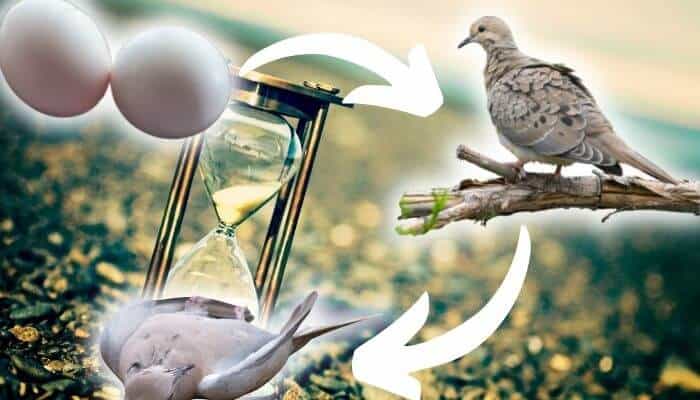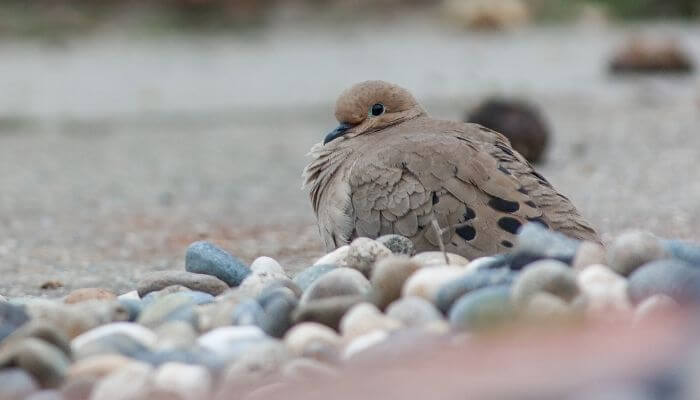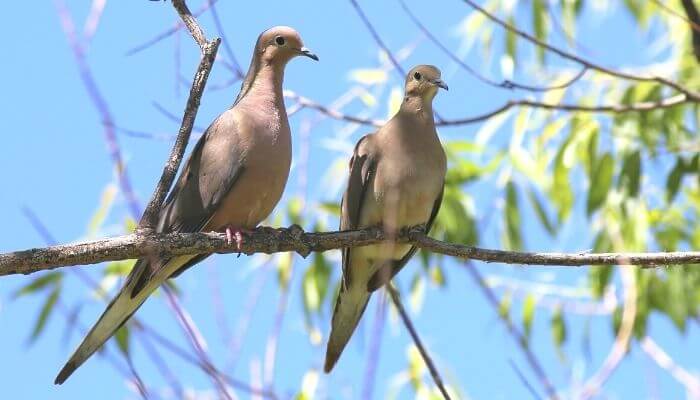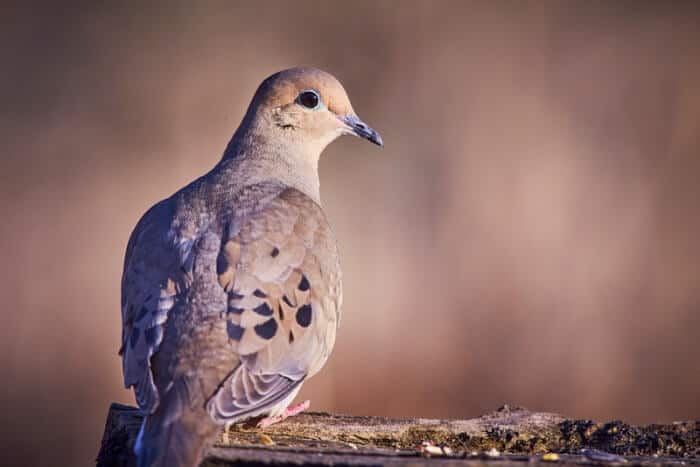The average mourning dove has a lifespan of just 1.5 years. However, they have been known to live as long as 31 years old in rare cases.

They are one of the most populous but also most hunted birds in North America with many people considering the Mourning Dove to be a delicious meal.
The Average Lifespan of Pigeons and Doves
How long a pigeon lives (and this includes doves i.e. all members of the Columbidae family) depends on a number of factors such as the environment, predators and human intervention but a key one is their status as either a domesticated or feral bird.

A pigeon or dove in captivity or in a domesticated setting has an average lifespan of 15 years and they have been known to live up to 30 years.
The longest living pigeon according to records was a red checker cock called Kaiser.
Not only did he live until the age of 32 and half years but his life could easily have been a movie script.
He was owned and trained by the German Imperial Crown for use in carrying messages in the First World War but was captured by the Americans and used by them for breeding.
Life as a feral pigeon is quite different. The average lifespan of a wild pigeon or dove is 3-6 years.
At just 1.5 years, you can see that the mourning dove is well below average.
Why Does the Wild Mourning Dove Have a Short Lifespan?
While the average lifespan is just 1.5 years, individuals or groups of mourning doves can live up to 20 years.
The oldest known free-living mourning dove, as confirmed by bird banding research, was over 31 years old.
There is nothing unusual about the species that means there is a genetic reason for a short life.
That a bird aged 30+ is known shows that they do have a very high biological age potential.

They are an attractive bird that has adapted to many environments and is found right across North America.
Estimates put the mourning dove population at anywhere between 194 and 450 million.
The mourning dove follows the usual pigeon life cycle and also breeds prolifically, producing up to six broods a year.
These all seem to be to the bird’s advantage so why the short life span?
Mourning doves who live in safe environments with abundant food sources are more likely to live longer than average.
Limited studies show that mourning dove survival varies throughout the species distribution and that some populations in northerly latitudes live longer than average.

But survival is volatile and unpredictable and the reality is that most mourning doves fail to make it to their first birthday.
As many as 75 percent of hatchlings and juveniles succumb to starvation, predation or disease before their first birthday.
If they reach adulthood, the year-on-year survival rate is 50–60%.
The reasons for their high mortality rate:
- Nest failure – mourning dove nests have a surprisingly high failure rate of between 40 and 80 percent. Nests are small, unstable and susceptible to strong wind and also fail due to adverse weather. (One study in Alabama put nest losses due to adverse weather at 33 percent).
- Disease – mourning doves are particularly susceptible to some of the common pigeon diseases across the whole range of fungal, viral, protozoan and bacterial, particularly trichomoniasis (aka canker and avian pox.
- Predation – the most common predators of mourning doves are corvids (birds of the crow family), raccoons, rat snakes, cats, and fox squirrels. Hawks and other raptors are not among the top predators because mourning doves are one of the more fast and agile species of the Columbidae family.
- Hunting – Although seasonal, licensed dove hunting accounts for the death of 20 million birds every year.
- Starvation – mourning doves need to eat around 12-20 percent of their body weight every day. Where food is scarce, they starve being able to survive without food for a couple of days only.
Things may be stacked against them but thanks to their prolific breeding, there is no concern that their short life span will result in a concern for population numbers.
